Passive House Explained
Our three in-house Certified Passive House Consultants provide insights to the significant benefits and range of applications of Passive House standards.
View PostCambridgeSeven Aquarium Research Group
Adam Mitchell, AIA, Sharon Clarke, AIA, Justin Crane, AIA, Chris Muskopf, AIA, Douglas Flandro, CPHC, Bradley Converse, AIA, Andy Aiken of Aiken LSS Design & Engineering, and Philip Steiner, P.E. of Altieri
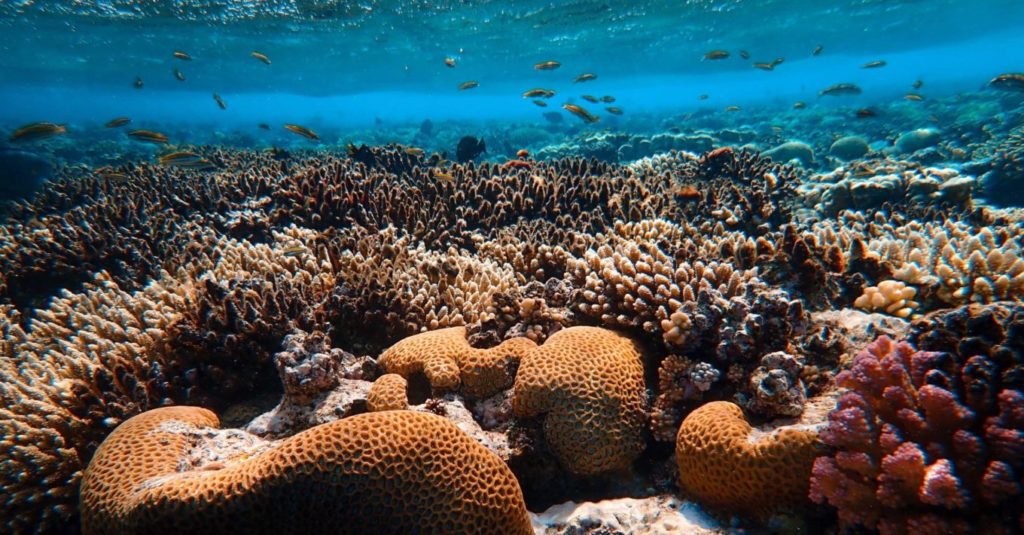
“Ocean acidification – the excess carbon dioxide in the atmosphere that is turning the oceans increasingly acid – is a slow but accelerating impact with consequences that will greatly overshadow all the oil spills put together. The warming trend that is CO2-related will overshadow all the oil spills that have ever occurred put together.”
– Sylvia Earle, ‘Q. and A.: For Oceans, ‘Another Big Headache’, New York Times, May 5, 2010
CambridgeSeven is on the cutting edge of reducing carbon use in our buildings and engaging our clients in sustainable building design. We are active participants in the AIA’s 2030 Commitment, a data-driven framework for architectural firms working towards the goal of 100% carbon neutral construction by the year 2030. To reach this goal, one significant step we are taking is working with our aquarium clients on developing energy-sparing Life Support Systems that keep their aquatic exhibit ecosystems healthy with vigorous fish.
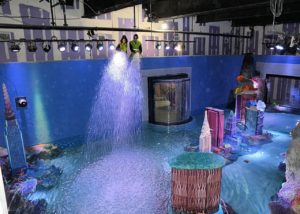 During design, CambridgeSeven works with aquarium staff and our engineering team to draft a sustainability plan that identifies the best systems design to meet performance criteria and reduce the use of energy and water resources. One example is at the National Aquarium in Baltimore where we specified and installed variable speed pumps that are activated and throttled up and down depending on demand for water, as well as the use of a very efficient filtration system that cleans water with low-energy-use equipment. Our experiences sparked questions about what the greater aquarium community is doing to reduce energy use and conserve water.
During design, CambridgeSeven works with aquarium staff and our engineering team to draft a sustainability plan that identifies the best systems design to meet performance criteria and reduce the use of energy and water resources. One example is at the National Aquarium in Baltimore where we specified and installed variable speed pumps that are activated and throttled up and down depending on demand for water, as well as the use of a very efficient filtration system that cleans water with low-energy-use equipment. Our experiences sparked questions about what the greater aquarium community is doing to reduce energy use and conserve water.
For aquariums, the issues around conservation and their institutional carbon footprint are immediate and pressing. The cost of resource and water usage is a recurring budget line-item, as well as a tangible measure of sustainability and an overt expression of institutional values. Reducing reliance on fossil fuel-generated electricity and ending the release of carbon dioxide into the atmosphere are both essential to halt ocean warming and acidification. While aquariums are well known for their efforts to preserve ocean animal life through stranding rescue programs, public advocacy for habitat protection, and their important educational outreach to the public, they are less known for their active use of resource-sparing technology in operating their facilities.
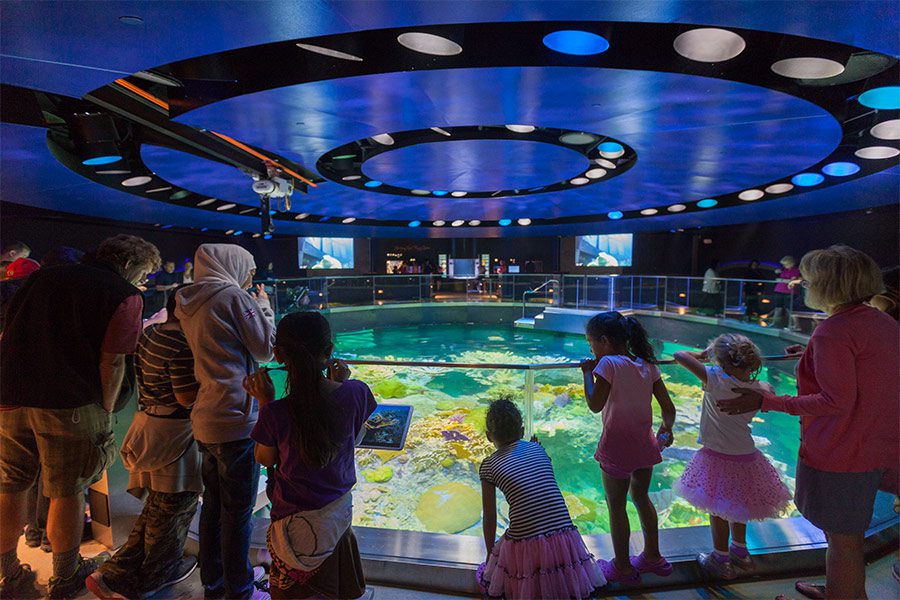
Recently, CambridgeSeven, joined by Andrew Aiken of Aiken LSS Engineering and Philip Steiner of engineering consultant, Altieri, set out to document what aquariums are doing to conserve energy and water resources in their Life Support Systems (LSS).
It is no secret that supplying clean, nutrient-rich water to an aquarium’s collection is an essential (and expensive) task of the institution’s daily operation. Yet the process for delivering clean and safe water to aquariums is often shrouded in mystery or part of technical, back-of-house operations not accessible to visitors. To find-out what aquariums are doing in their efforts to conserve resources, we contacted 98 Association of Zoos and Aquariums (AZA) members to query them about their techniques and procedures for reducing their resource usage and sourcing of aquarium water.
What we found is very encouraging and exemplifies their commitment to resource conservation practices. These conservation actions are an important model for all of us concerned about the environment. However, we also discovered barriers to further improving LSS conservation practices. Barriers include the capital-intensive nature of replacing and upgrading LSS equipment ahead of scheduled system maintenance. The study inventories these conservation practices, as well as identifies an opportunity to expand institutional sustainability mission statements to include practices and policies that govern internal LSS management.
In our study, we developed a five-question survey that asked aquariums and zoos across the world to describe their conservation practices. Our team found that 100% of survey respondents are implementing conservation measures in their LSS. These measures include:
It is our hope that by drawing attention to LSS best-conservation techniques and practices, this survey will inspire even more conservation efforts from both aquariums and the visiting public.
An important opportunity for water conservation was revealed by our study. Eighty percent of survey respondents are utilizing municipal water departments to provide water for their aquariums. This is an operational practice where more sustainable alternatives could be instituted to preserve potable water, especially in regions of the United States where water shortages are endemic. A topic for further study should be the development of alternative water sources for aquarium life support.
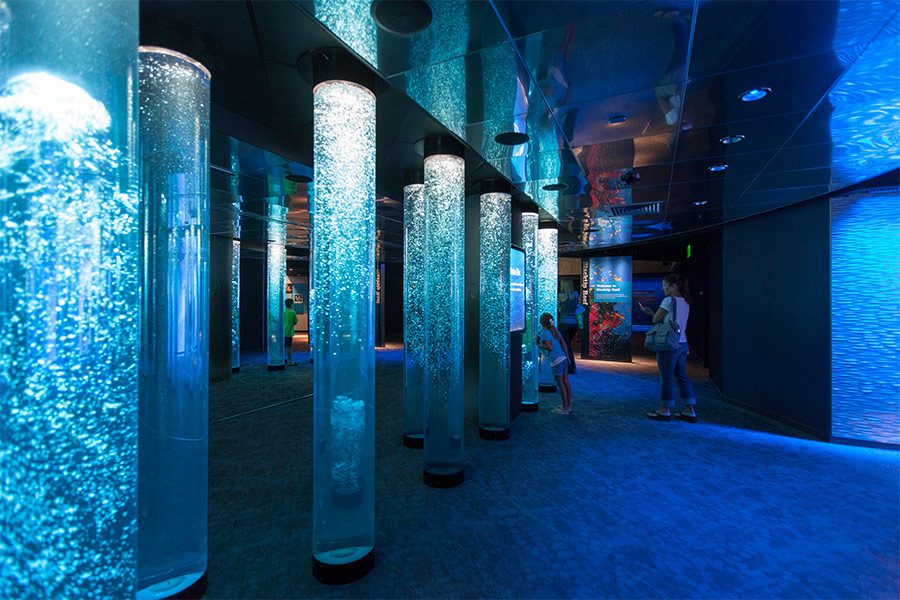 Another survey finding worthy of further investigation, and one that has operational implications for zoos and aquariums, is the relative diversity of sustainable management practices. Currently, conservation responsibility falls on many different individuals within an organization. An opportunity for institutions to organize these efforts and create explicit management structures that ensure conservation actions should be seized by institutions as they seek to maximize sustainable practices.
Another survey finding worthy of further investigation, and one that has operational implications for zoos and aquariums, is the relative diversity of sustainable management practices. Currently, conservation responsibility falls on many different individuals within an organization. An opportunity for institutions to organize these efforts and create explicit management structures that ensure conservation actions should be seized by institutions as they seek to maximize sustainable practices.
Often, current practice prioritizes low-cost equipment and systems with minimal thought to investing in new equipment or upgrades that would save energy and water and therefore save money over time. Designating a staff position responsible for implementing conservation and quantifying and recording progress would benefit the institution’s annual budget and would also be a powerful tool in promoting the conservation message to the general public. We are encouraged to see a wide range of aquarium staff addressing sustainability issues from very different perspectives and showing individual agency. Ultimately, a solution that combines a centralized commitment with department or individual-level awareness and responsibility points should be a long-term management goal. Finally, a more in-depth study quantifying resource and water conservation and the direct cost-saving impact that these systems have on institutional budgets is a necessary next step in our study and is one that CambridgeSeven will begin soon.
Global warming due to carbon-intensive resource production is now recognized as a major threat to the earth’s oceans through ocean warming and acidification. Individual conservation actions must be paired with institutional operational procedures that initiate sustainable resource and water resource management. Raising awareness about LSS resource efficiency and water conservation is an important step in developing institutional conservation priorities that reflect broader zoo and aquarium sustainability missions. Publicizing current conservation practices in aquarium and zoo operations, as documented by this study, is a first step in challenging all AZA members to improve conservation policies.
Conservation practices have the added benefit of reducing operating costs. Such savings improve institutional finances, freeing up funds for other mission-critical activities. When our conservation actions, whether individual or institutional, are no longer seen as virtues, but rather part of a larger effort pursuing conservation policies, our common quest to reduce the release of carbon dioxide into our atmosphere will be significant. Reducing total demand is an essential part of this process.
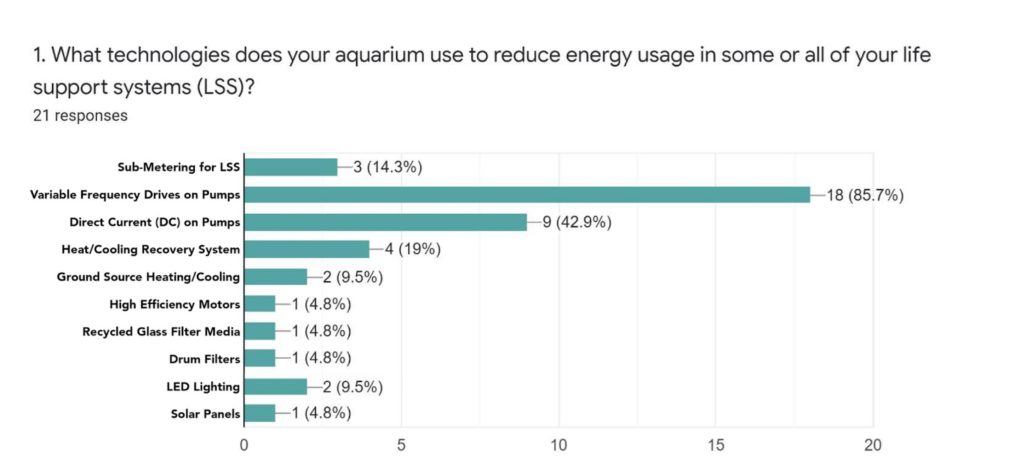
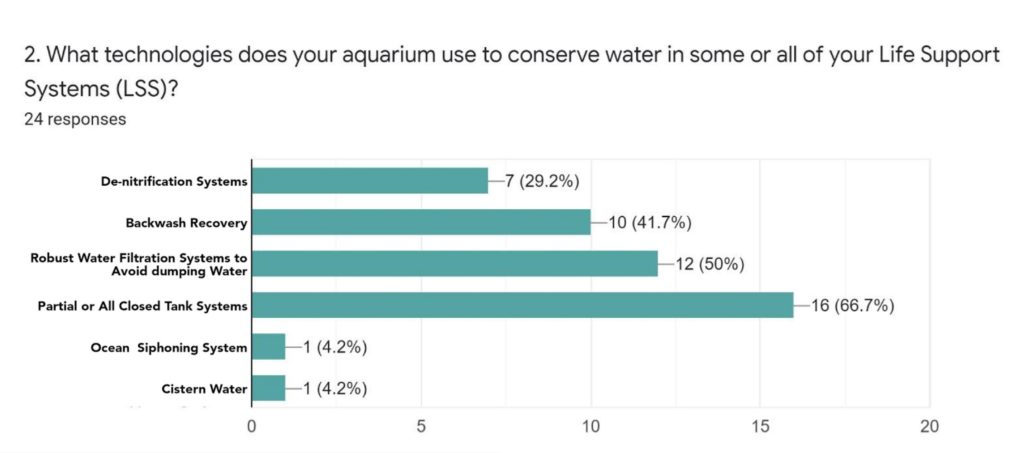
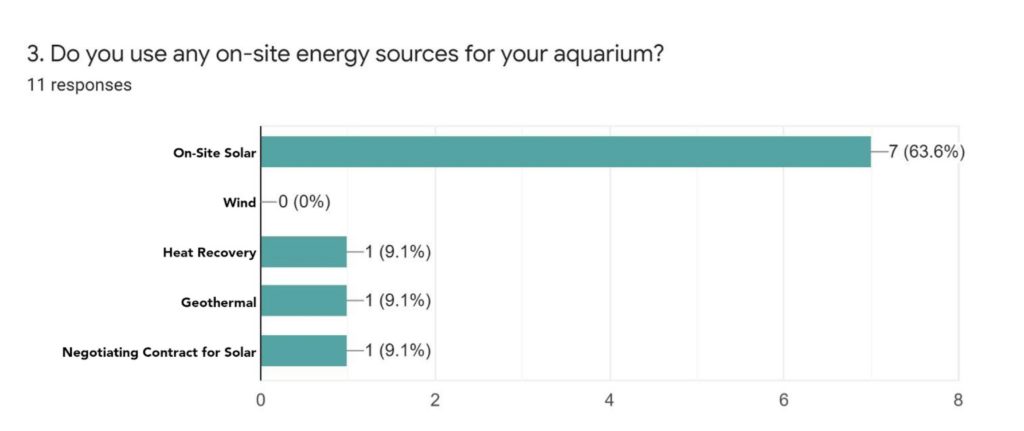
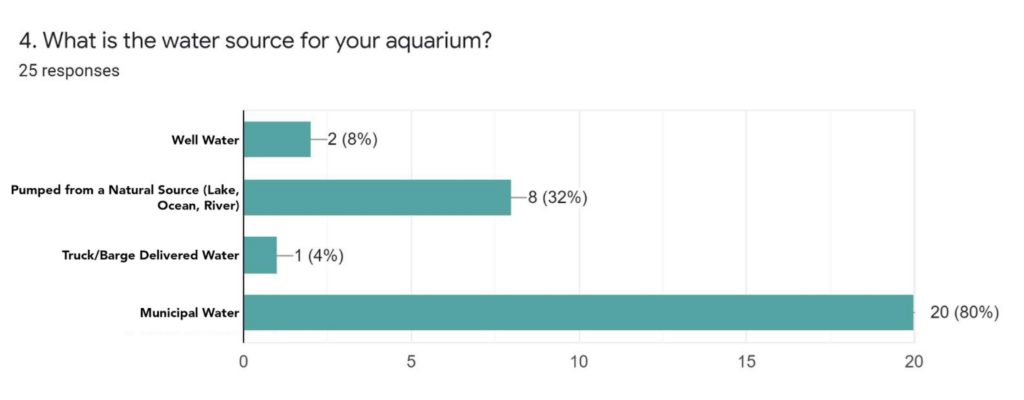
This article was originally published June 16, 2020
Our three in-house Certified Passive House Consultants provide insights to the significant benefits and range of applications of Passive House standards.
View PostOur in-house experts collaborated with a group of our talented consultants to summarize best practices for designing sustainable exhibits with wow-factor and longevity in mind.
View Post